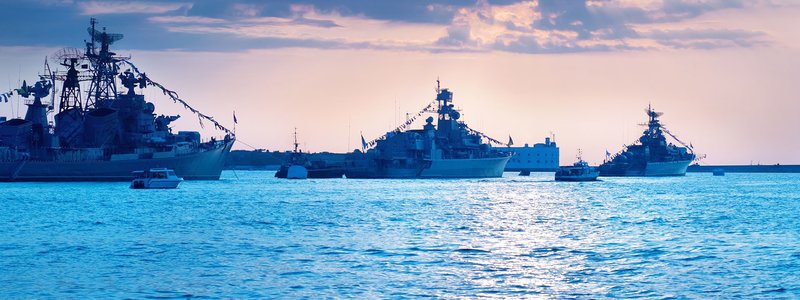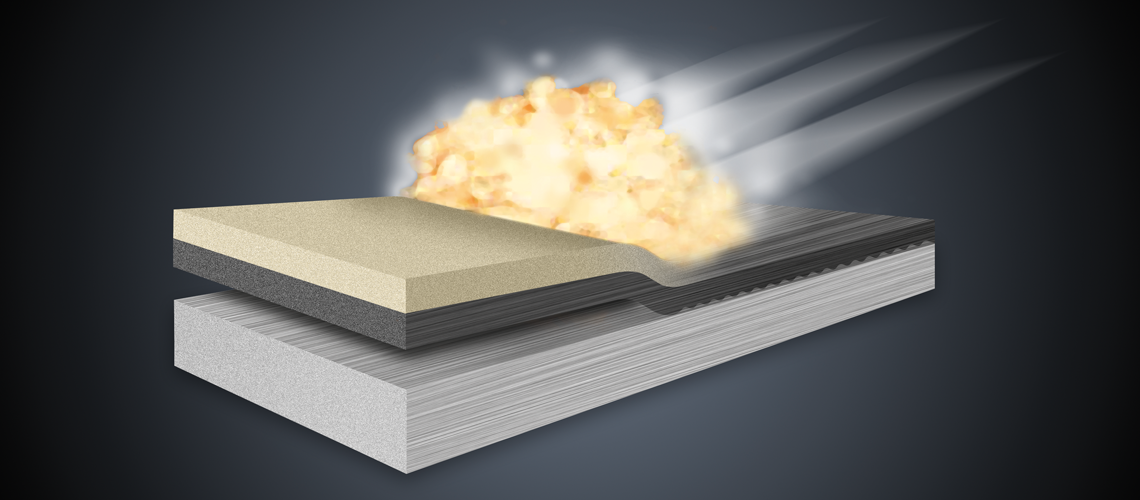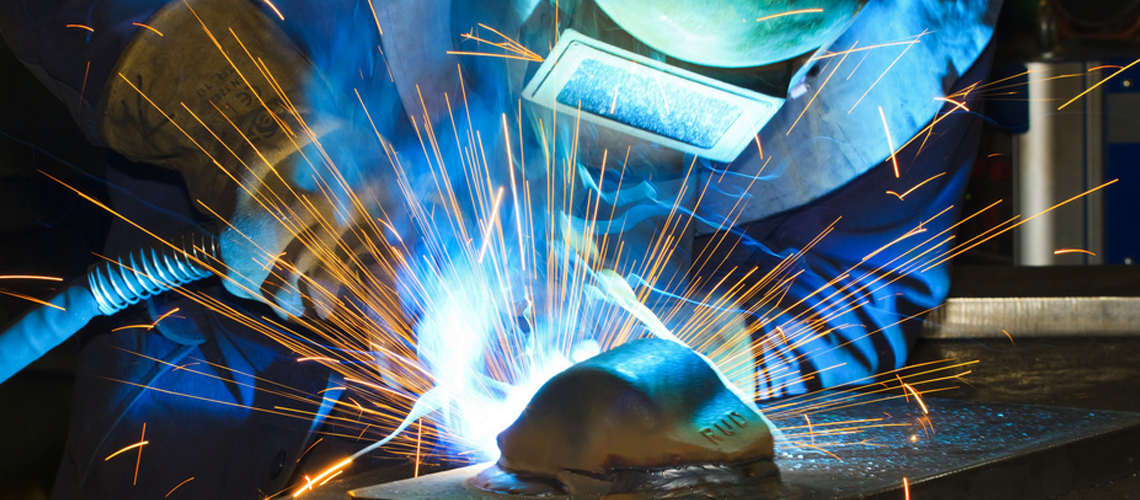
Welding parameters: general guidelines
Welding parameters: general guidelines
It will be clear that the final result of any welding operation is largely dependent upon the workmanship and experience of the welder himself. Having no control over that, Merrem & la Porte therefore accepts no liability in this respect.
Welding speed is a function of the thermal equilibrium achieved. This in turn is related to the welding conditions, dimensions of the joint, position of the weld, dissipation of heat into the structure etc. All these factors must be taken into consideration, and care taken to ensure that the interface temperature does not exceed 300 ̊C. Small diameter wires (e.g. 1.2 mm for the aluminium) and small diameter electrodes (e.g. 2.4 mm for steel) are preferred.
Welding conditions
Welding conditions
The recommended welding methods and/or parameters do not differ from those used for the two parent metals, apart from the need to avoid overheating the interface between the two metals.Thus, for welding the aluminium plate to the joint strip, TIG and MIG welding are acceptable. Synergic pulse MIG welding is also now being used.It is essential that the aluminium oxide film is wire brushed away immediately before the welding operation is carried out and degreased with a solvent. Clean gloves are worn when handling rods or wires. Argon is the preferred shielding gas.In the event that TIG or MIG welding equipment is not available, then manual arc welding is possible, using covered electrodes consisting of pure aluminium, or aluminium-silicon (5-10% Si) or aluminium 1.2% Manganese, but this is not recommended. The weld will not be as strong as with MIG or TIG due to the risk of gross porosity, and welding by this process is limited to downhand For the filler metal, assuming the plate to be 5086 or similar, Al-5Mg composition material is recommended (typically 5556A , 5356 or 5183).In all cases, the use of short tacking runs and avoidance of heavy stringers to ensure that interpass temperatures stay below 200 ̊C (390 F), is recommended. The weld bead should be flat, or slightly concave.
For the steel weld, GMAW (pulsed gas metal arc weld ) or FCAW (flux cored arc welding ) are the preferred processes, as these result in lower workpiece temperatures than the alternative SMAW (shielded metal arc welding) process. Electrodes should be suitable for low (max 0.12%) carbon steel. Detailed welding procedures are available upon request. However, all procedures should be agreed with the inspection authority who may request weld test pieces. Should weld procedures demand the use of dye-penetrant testing; it should be noted that the semi-porous nature of the aluminium / steel interface will normally show an intermittent indication, and should not be a cause for concern. Pre-heating should be avoided wherever possible, but if conditons require pre-heating, DO NOT PRE-HEAT THE TRICLAD, only heat the aluminium structure being attached to it.
Butt joints
Strip ends should be chamfered. The strips should be butted and firmly clamped. If possible, the aluminium weld should be made first, using several straight passes in order to minimise temperature rise of the joint strip interface. Until sufficiently experienced, it is recommended to monitor the interface’s temperature by using heat sensitive paint or other suitable means.The welding parameters should be adjusted to achieve full penetration of the weld bead allowing cool down time between the subsequent passes. The 3 mm unwelded area at either side of the interface should be hammer peened if a water tight joint is required. Alternatively; drill and inject sealant or epoxy.
Where the end of a TriClad strip butts against a single metal (aluminium or steel); jointing or sealant should be inserted to prevent corrosion. On no account should an attempt be made to weld across the interface between the steel and the aluminium in the joint! Corners may be mitred as shown or, where space permits, bend.Bends are stronger and permit the positioning of joints in more accessible positions. Bends should have a minimum radius of not less than 10 times the joint’s width in the plane of the bend.
Read more about TriClad:
Product | Production | Advantages | Approach | Brochure | FAQ | Contact
Find out more about structural transition joints and TriClad:
About TriClad | General background of explosion cladding | TriClad's corrosion resistance | Welding aluminium to steel | Joining aluminium to steel | Aluminium steel welding | What is a structural transition joint | Structural transition joints: DetaCouple and TriClad | Explosion welding | Explosion bonding | Explosion cladding | The application of TriClad in the marine industry | TriClad plate in strips - cut on demand for you | TriClad for cruise ships | Yacht TriClad | Marine TriClad




